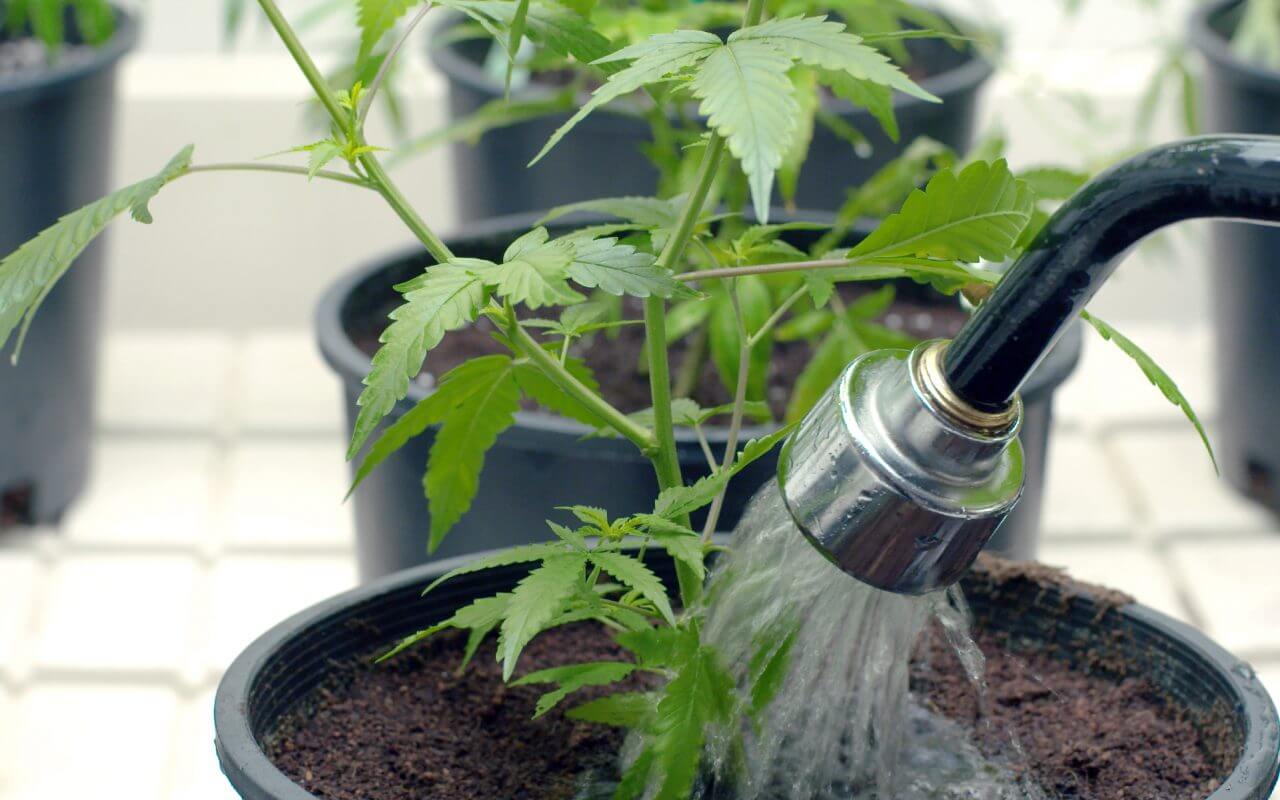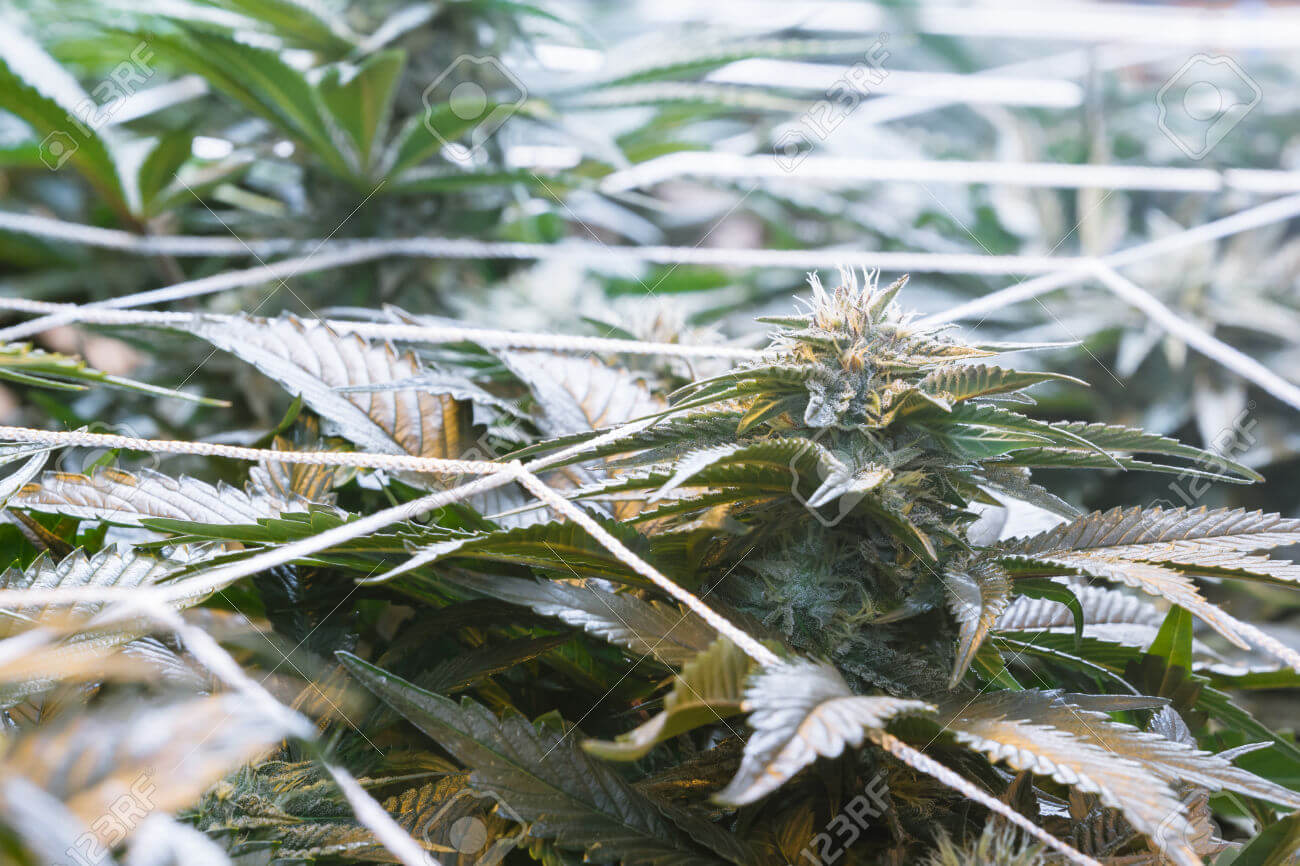Marijuana Growing 101: How To Manage Wilting Leaves
“Wilting” or “drooping” Leaves means that there is a deficiency somewhere within the plant. A plants deficiency can come from one or multiple areas. The primary areas a plant receives nutrition from are: light (photo energy), atmosphere (CO2 and O2) and medium (H20 and mineral nutrients). Most of the time wilting or “drooping” leaves is a sign of problems dealing with water and/ or nutrients within the plant.When it comes to drooping leaves, the issue is most often due to over-watering. Over-watering can lead to “drowned roots". Drowned roots cause the plant to react poorly and ultimately create high stress levels within the plant. These high stress levels cause a hormone called “abscisic acid” to formulate. The hormone can cause the leaf stomata (pore) to close. The plants pores drown because of this and created problems for the plants mandatory functions, such as respiration and photosynthesis.Over-watering can also cause the soil or (grow medium) to compress and suffocate the roots, which respire by breathing in oxygen (O2) during the dark or night cycle. The top third of the root structure contain air-specialized roots for this purpose. If the grow medium becomes too compact, the breathable roots may lose their ability to respire and absorb oxygen, this process is used to convert sugars to energy. Both the loss of oxygen and the buildup of abscisic acid will severely weaken stems and leaves of the plant above the surface. Generally, good watering practice dictates that you water each plant once, at the start of the day when the sun/ lights come up. Saturate the medium well, until you see the first drops seep out of the bottom of the container. That will be enough water for the day. It is also a good idea to let the medium become fairly dry—at least near the surface of the medium—before attempting to water the plant again.It is important to remember that while the plant itself breathes in CO2, the roots beneath the surface breath in oxygen (O2) during the night cycle. This is an essential part to healthy plant growth and development. And a dry, aerated medium goes a long way in allowing air to permeate the root zone and roots to breathe in their precious O2.To fix the drooping, allow the medium to dry out overnight (completely) and use a thin stick (i.e., a skewer) to gently poke holes around the surface of the medium to help aerate—taking care not to damage any roots below. Poke around the edges, about an inch or two down, making a circling motion with the stick to make small holes.
Generally, good watering practice dictates that you water each plant once, at the start of the day when the sun/ lights come up. Saturate the medium well, until you see the first drops seep out of the bottom of the container. That will be enough water for the day. It is also a good idea to let the medium become fairly dry—at least near the surface of the medium—before attempting to water the plant again.It is important to remember that while the plant itself breathes in CO2, the roots beneath the surface breath in oxygen (O2) during the night cycle. This is an essential part to healthy plant growth and development. And a dry, aerated medium goes a long way in allowing air to permeate the root zone and roots to breathe in their precious O2.To fix the drooping, allow the medium to dry out overnight (completely) and use a thin stick (i.e., a skewer) to gently poke holes around the surface of the medium to help aerate—taking care not to damage any roots below. Poke around the edges, about an inch or two down, making a circling motion with the stick to make small holes. Take another thin stick and use it as a support stake, if necessary. Stake it near the base of the plant and rest or tie the main stem to it. Make sure the plant’s main stem and branches are not thin and spindly. If they are, this could also be a sign they are stretching for light. Make sure your plant is directly under the light source and receiving around 18 hours of light per 24 hours to help it vegetate.You are likely still a few weeks to a month away from being able to switch to a 12/12, light/dark cycle to induce flowering because of this setback with the drooping leaves. However, with some diligence and care, you can easily get your babies to bounce back and have a productive life cycle.The main thing to remember is to have fun with the grow and learn as much as you can from a trial and error standpoint. No one is perfect in their first grow and you can always learn from past experiences. Like anything else, the more time you put into learning - the easier it becomes.
Take another thin stick and use it as a support stake, if necessary. Stake it near the base of the plant and rest or tie the main stem to it. Make sure the plant’s main stem and branches are not thin and spindly. If they are, this could also be a sign they are stretching for light. Make sure your plant is directly under the light source and receiving around 18 hours of light per 24 hours to help it vegetate.You are likely still a few weeks to a month away from being able to switch to a 12/12, light/dark cycle to induce flowering because of this setback with the drooping leaves. However, with some diligence and care, you can easily get your babies to bounce back and have a productive life cycle.The main thing to remember is to have fun with the grow and learn as much as you can from a trial and error standpoint. No one is perfect in their first grow and you can always learn from past experiences. Like anything else, the more time you put into learning - the easier it becomes.

